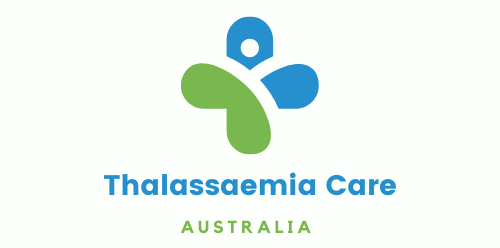Are you curious about what TMS actually does? Well, you’re in luck! In this article, we’ll delve into the basics of TMS and its treatment process.
You’ll also discover the various conditions that TMS can help with and the benefits of this therapy. If you’re looking for an alternative treatment option, exploring TMS could be the answer you’ve been searching for.
So, let’s dive in and uncover the wonders of TMS together!
Key Takeaways
- TMS is a non-invasive procedure that uses magnetic fields to stimulate specific areas of the brain.
- TMS is primarily used as a treatment for depression, but has also shown promise in managing other mental health conditions such as anxiety and obsessive-compulsive disorder.
- The effectiveness of TMS in treating depression has been well-documented in clinical studies.
- TMS therapy offers a non-invasive and safe alternative for those seeking relief from depression and anxiety.
The Basics of TMS

What exactly is TMS and how does it work?
Transcranial magnetic stimulation (TMS) is a non-invasive procedure that uses magnetic fields to stimulate specific areas of the brain. It involves placing a magnetic coil against the scalp, which generates small electric currents that can activate or inhibit brain cells in targeted regions.
TMS treatment is primarily used for depression, but it has also shown promise in managing other mental health conditions such as anxiety and obsessive-compulsive disorder. The effectiveness of TMS in treating depression has been well-documented in clinical studies, with many patients experiencing significant improvements in their symptoms.
However, like any medical intervention, TMS does come with potential side effects such as headache, scalp discomfort, and muscle twitching. These side effects are generally mild and temporary.
Understanding TMS Treatment Process
To understand the TMS treatment process, you’ll learn about the step-by-step procedure involved in administering this non-invasive therapy.
- Initial Assessment: Before starting TMS therapy, a comprehensive evaluation is conducted to determine if you’re a suitable candidate.
- Target Localization: During the first treatment session, the areas of your brain to be targeted are identified using advanced imaging techniques.
- Coil Placement: A specialized magnetic coil is placed on your scalp in the targeted area.
- Treatment Sessions: You’ll undergo multiple treatment sessions, typically lasting about 30 minutes each, over a period of several weeks.
- Monitoring and Adjustments: Throughout the treatment process, your response to TMS therapy is closely monitored, and adjustments are made if necessary to ensure optimal effectiveness.
Conditions TMS Can Help With
TMS can help with a variety of conditions by targeting specific areas of the brain.
One of the main applications of TMS is in the treatment of depression. Research has shown that TMS can effectively alleviate symptoms of depression in individuals who haven’t responded well to traditional treatments such as medications or therapy.
By stimulating specific regions of the brain, TMS can help regulate mood and improve overall well-being.
Additionally, TMS has also been found to provide relief for individuals suffering from anxiety disorders. It can help reduce anxiety symptoms and promote relaxation by modulating the neural circuits involved in anxiety regulation.
TMS offers a non-invasive and safe alternative for those seeking relief from depression and anxiety, providing new possibilities for treatment and improved quality of life.
Benefits of TMS Therapy
One of the key advantages of TMS therapy is its ability to provide significant relief for individuals with various mental health conditions. TMS, or Transcranial Magnetic Stimulation, has been proven to be effective in treating a range of disorders, including depression, anxiety, and obsessive-compulsive disorder (OCD).
Here are five benefits of TMS therapy:
- Non-invasive: TMS therapy doesn’t require any surgery or anesthesia, making it a safe and convenient treatment option.
- Minimal side effects: Unlike some medications, TMS therapy has minimal side effects, with the most common being temporary headache or scalp discomfort.
- Targeted treatment: TMS targets specific areas of the brain associated with the mental health condition, providing focused relief.
- Long-lasting results: Many individuals experience long-lasting benefits from TMS therapy, even after the treatment sessions are completed.
- Alternative to medication: TMS therapy offers an alternative for individuals who haven’t responded well to medications or prefer a drug-free treatment option.
Exploring TMS as an Alternative Treatment Option
If you’re looking for an alternative treatment option, it’s worth exploring TMS as a potential solution for your mental health condition. Transcranial Magnetic Stimulation (TMS) has shown promising results in treating depression.
Numerous studies have demonstrated the efficacy of TMS for depression, with many patients experiencing significant improvement in their symptoms. TMS works by using magnetic pulses to stimulate specific areas of the brain associated with mood regulation.
Unlike medications, TMS doesn’t require systemic absorption and therefore minimizes the risk of systemic side effects. Common side effects of TMS treatment are typically mild and temporary, including headaches, scalp discomfort, and muscle twitches.
Frequently Asked Questions
Are There Any Side Effects or Risks Associated With TMS Therapy?
Side effects and risks of TMS therapy are generally minimal. Safety precautions are taken to protect you during treatment. Efficacy varies, but success rates are promising. Long-term effects are still being studied. Patient experiences differ. Alternatives, cost considerations, clinical trials, and treatment guidelines are worth exploring.
How Long Does It Take to See Results From TMS Treatment?
TMS treatment typically takes several weeks before you start seeing results. Success rates vary, but many patients experience significant improvements in their symptoms. It’s important to complete the full duration of treatment for optimal outcomes.
Can TMS Be Used in Combination With Other Treatments?
Yes, TMS can be used in combination with other treatments such as medication. It can also be used as a standalone treatment. TMS has been shown to have positive effects when combined with other therapies.
Is TMS Therapy Covered by Insurance?
TMS therapy may be covered by insurance, but the extent of coverage and affordability vary. It’s important to check with your insurance provider to see if they cover TMS and what expenses you may be responsible for.
How Long Do the Effects of TMS Therapy Last?
The effects of TMS therapy can vary in duration, but research suggests that they can be long-term for some individuals. It is important to discuss the potential duration of effects with your healthcare provider.
